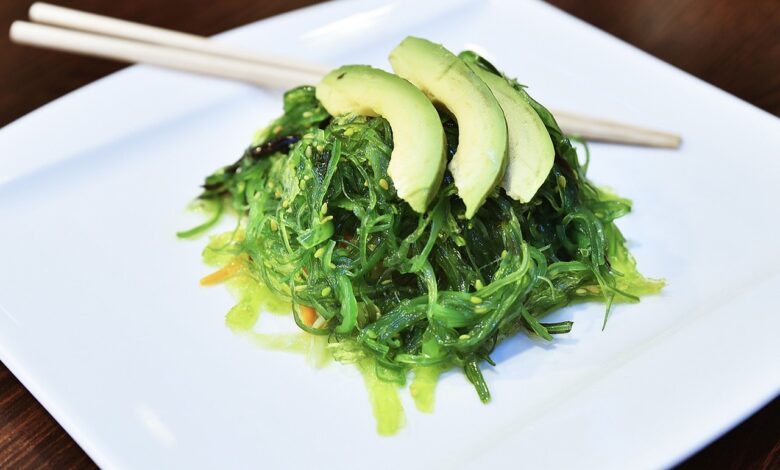Seaweed: Health Benefits And Side Effects

The History Of Seaweed
Today, there are a large number of products that have a low calorie content, but have great benefits for our body. These products include seaweed.
Luminaria grows at a depth of 10-12 meters and belongs to the class of brown algae. Seaweed grows in the Japanese, Okhotsk, Kara, White Seas, in the Atlantic and the Pacific Ocean.
For the first time, they learned about seaweed in Japan. Today this country is the leader in the production of kelp.
In some countries, seaweed appeared in the 18th century. It began to be used not only in cooking, but also in medicine. Luminaria on the territory of our country was discovered by members of the Bering expedition and began to be called “whalebones”.
Nowadays, out of the known 30 types of sea kale, only 5 types are used in cosmetology, medicine and cooking.
The Benefits Of Seaweed
Seaweed is rich in many vitamins and minerals that are essential for human health. In terms of composition, kelp contains a lot of iodine, vitamins A, groups B, C, E and D. This product contains enterosorbent substances that, like a sponge, draw out toxins, toxins and harmful bacteria from the body.
Doctors recommend using kelp for diseases of the thyroid gland, for the prevention of cancer, for the normalization of metabolism.
Thanks to the fatty acids contained in seaweed, atherosclerosis can be avoided.
In general, seaweed has nothing to do with ordinary cabbage. This is kelp – an algae that grows in the seas. For a nutritionist, first of all, sea kale is valuable for its high content of iodine.
The need for iodine increases in the growing body of children, in people with active mental and physical activity, pregnant women and during lactation. And also in patients with impaired thyroid function – hypothyroidism. Organic iodine from kelp is better absorbed than synthetic iodine-containing preparations.
Do not forget the contraindications of kelp – this is a hyperfunction of the thyroid gland, when hormones are produced in excess.
As for the choice of seaweed, I recommend fresh or dried. Pickled seaweed loses all its beneficial properties and can even become unhealthy when stored in plastic packaging.
Most experts recommend eating no more than 40 grams of seaweed per day.
The Composition And Calorie Content Of Seaweed
| Calories per 100 grams | 49 kcal |
| Squirrels | 0.8 g |
| Fats | 5.1 g |
| Carbohydrates | 0 g |
The Side Effects Of Seaweed
Despite the fact that sea kale is rich in nutrients, it has a number of contraindications:
- Sea kale is contraindicated for people with hyperthyroidism;
- Not recommended for eating with haemorrhagic pathologies. Seaweed has a pronounced laxative effect;
- Great absorbency. Before buying, you need to find out where the algae was caught, because. it can accumulate toxins. Such kelp will only harm the body;
- If you have allergic reactions.
Seaweed In Medicine
Seaweed contains a storehouse of useful substances. That is why doctors pay due attention to it.
With the daily use of an acceptable amount of algae, a person’s general well-being improves and metabolism is restored.
According to research results it became known that seaweed prevents the occurrence of cancer.
Due to the content of antioxidants, with constant eating, kelp perfectly rejuvenates the body and removes harmful substances.
Brown algae is shown to people of “big cities”. Indeed, due to a lack of iodine in the body, the thyroid gland begins to suffer.
Seaweed is great for constipation. Fibre, which is not contained in, gently affects the intestines and regulates stool.
Luminaria is indicated for pregnant women. Due to the content of bromine, the psychological state of the expectant mother will always be stable. Brown algae contains folic acid, which is also necessary for pregnant women. Before you start using kelp, be sure to consult your doctor!




